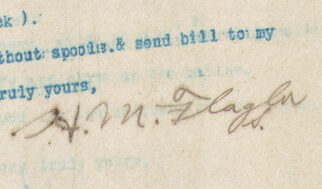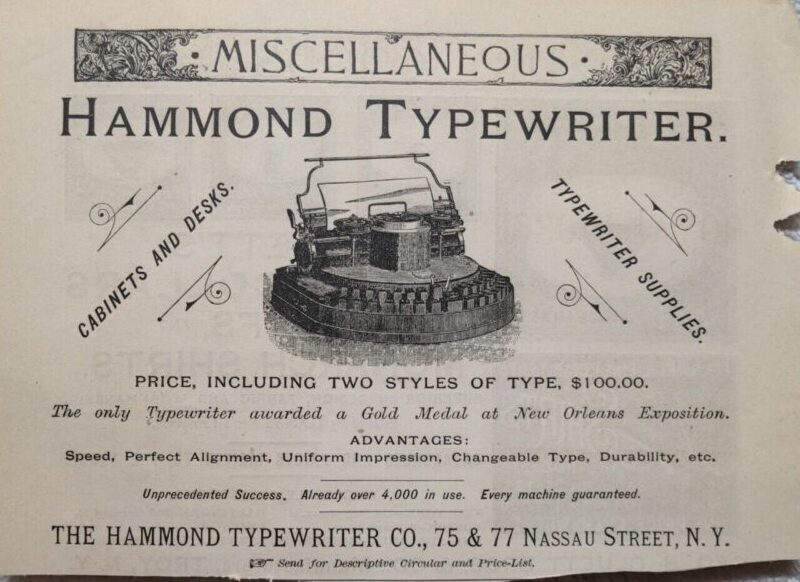On July 26, 1890 – almost 133 years ago to the day – Henry M. Flagler sent this letter to the Hammond Typewriter Company of 77 Nassau St, in New York City. This simple request for a ribbon would be quite banal if it were not for the man who wrote it and his possible connection to one James Bartlett Hammond.


Henry Morrison Flagler (January 2, 1830 – May 20, 1913) was a co-founder of Standard Oil, which is more closely remembered for its other co-founder, John D. Rockefeller. While he was considered the brains of Standard Oil, he decided in 1882 to step back and take a secondary role.

Mr. Flagler’s wife Mary had been quite ill and so on the recommendation of their doctor, in 1880 the couple spent the winter in Jacksonville. Two years after Mary’s death, Flagler married one of Mary’s caregivers, Ida Alice, and the couple honeymooned in St. Augustine.
The Flagler’s fell in love with St. Augustine and Henry would go on to build several beautiful hotels, such as the Ponce de Leon and the Hotel Alcazar. He invested heavily in infrastructure and purchased a railroad to connect this oceanside city to the rest of America.


Someone else loved St. Augustine, James Bartlett Hammond. He visited St. Augustine quite often and would later die there aboard his yacht, The Lounger, in 1913. Preceding Mr. Flagler by just four months.
As a fellow multimillionaire it is reasonable to assume Hammond and Flagler knew each other. Both were yacht owners, members of the New York Yacht Club, and frequent visitors to St. Augustine. However before today no concrete connection of any kind had been found.

Thanks to the Flagler Museum, we have the first clue that Flagler and Hammond may have been aware of one another. A simple letter requesting a typewriter ribbon dated when both men were members of the NY Yacht Club and visitors to St. Augustine.
This is one of several areas under research to discover clues about Mr. Hammond’s social life. Who were his friends? What clubs did he belong to? What was he like?
Letters like these are a vein to research and discover more clues to this amazing inventor. Regrettably Mr. Flagler’s Hammond, likely a No. 1, has been lost to history but the Flagler museum has recreated his office with a stand-in machine.
